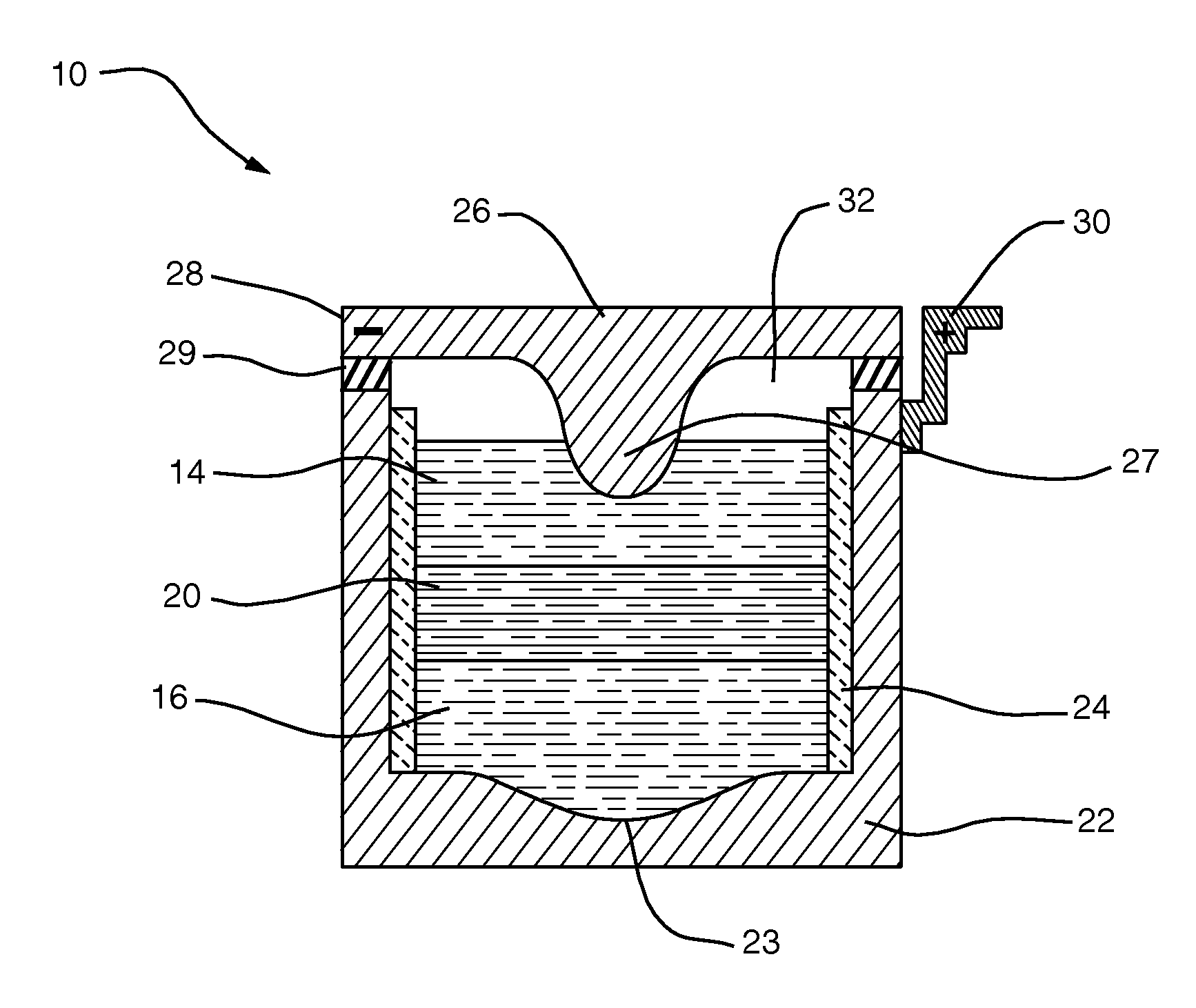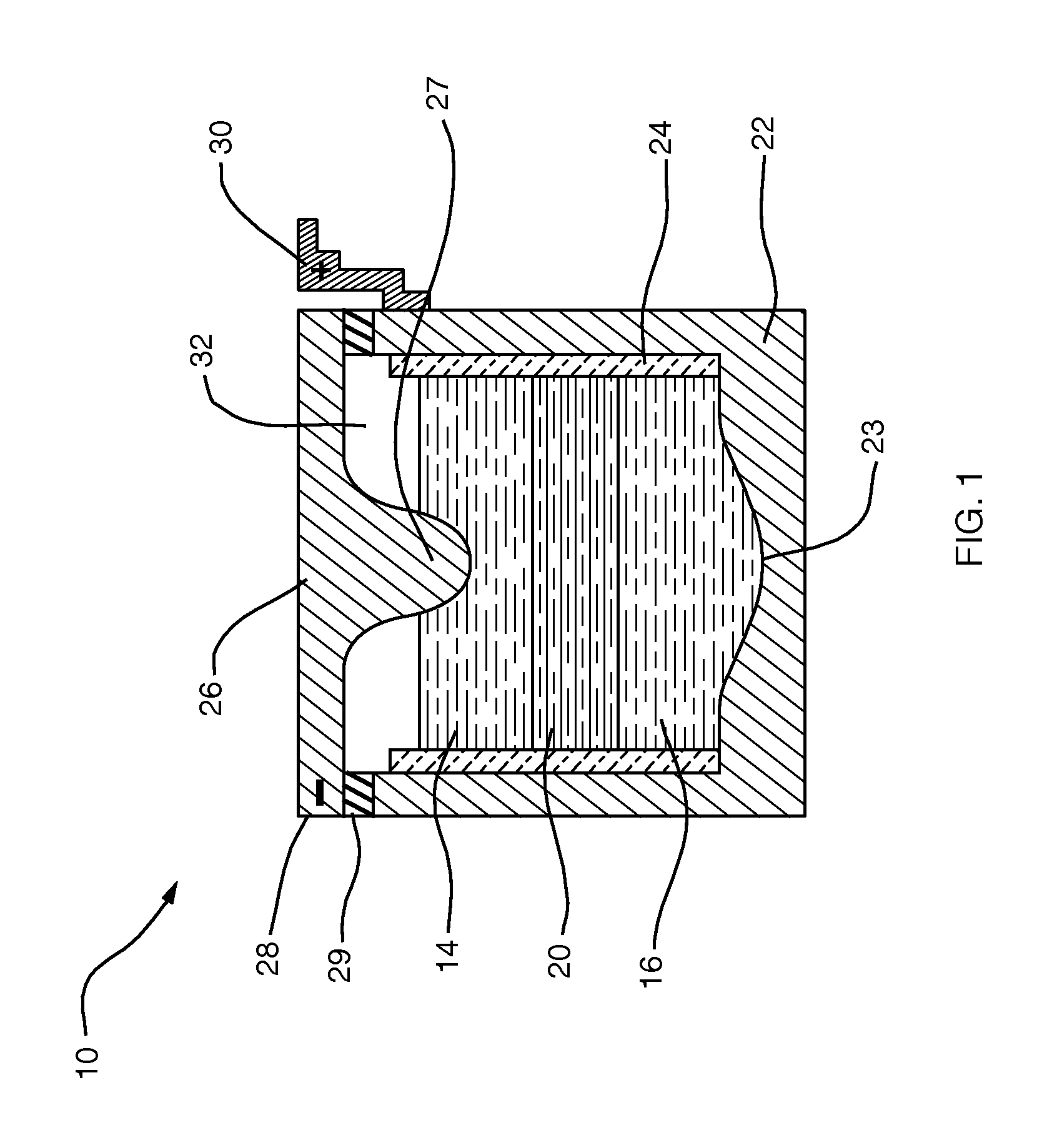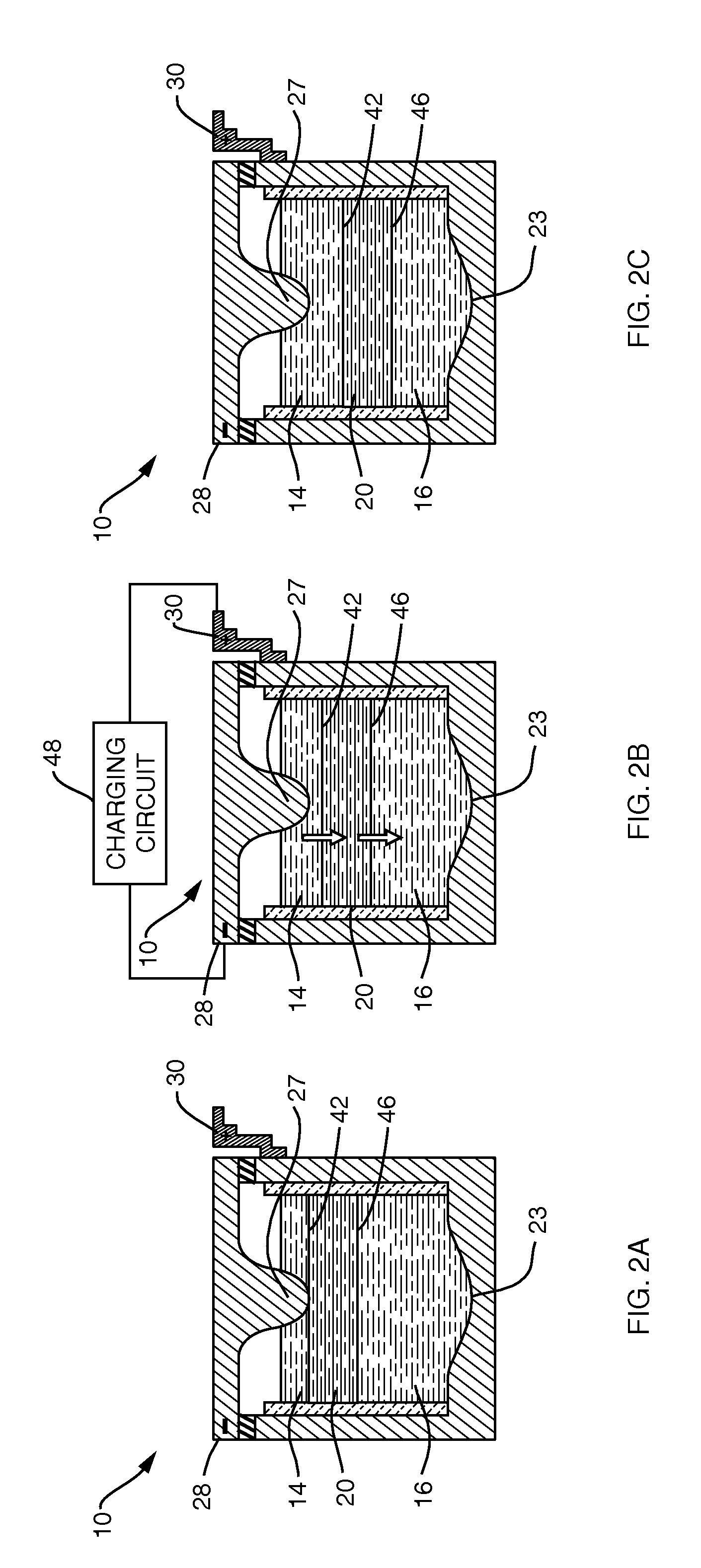Alkaline earth metal ion battery
a metal ion battery, alkaline earth technology, applied in the direction of secondary cell servicing/maintenance, non-aqueous electrolyte cells, cell components, etc., can solve the problems of inconvenient consumption, loss of revenue, suboptimal electrical energy management, etc., to reduce the emissions of pollutants and greenhouse gases
- Summary
- Abstract
- Description
- Claims
- Application Information
AI Technical Summary
Benefits of technology
Problems solved by technology
Method used
Image
Examples
Embodiment Construction
[0020]With reference to FIG. 1, an alkaline earth metal ion energy storage cell 10 houses three distinct liquid constituents: a molten metal body 14 that serves as negative electrode, also referred to as the active metal electrode; an electronically conductive liquid alloy body 16 that serves as positive electrode, also referred to as the alloy electrode; and an intervening ionically conductive electrolyte 20.
[0021]The liquid constituents are housed in an electronically conductive container 22 which provides mechanical support to an insulating inner sheath 24. The sheath 24 prevents shorting by electronic conduction between the negative electrode 14 and the positive electrode 16 through the container 22.
[0022]The cell is covered by an electronically conductive lid 26. An insulative seal 29 electrically insulates the lid 26 from the container 22 and confines molten constituents and vapors to the container 22. A portion of the lid 26 in contact with the negative electrode 14 functions...
PUM
| Property | Measurement | Unit |
|---|---|---|
| operating temperature | aaaaa | aaaaa |
| voltage | aaaaa | aaaaa |
| current densities | aaaaa | aaaaa |
Abstract
Description
Claims
Application Information
 Login to View More
Login to View More - R&D
- Intellectual Property
- Life Sciences
- Materials
- Tech Scout
- Unparalleled Data Quality
- Higher Quality Content
- 60% Fewer Hallucinations
Browse by: Latest US Patents, China's latest patents, Technical Efficacy Thesaurus, Application Domain, Technology Topic, Popular Technical Reports.
© 2025 PatSnap. All rights reserved.Legal|Privacy policy|Modern Slavery Act Transparency Statement|Sitemap|About US| Contact US: help@patsnap.com



